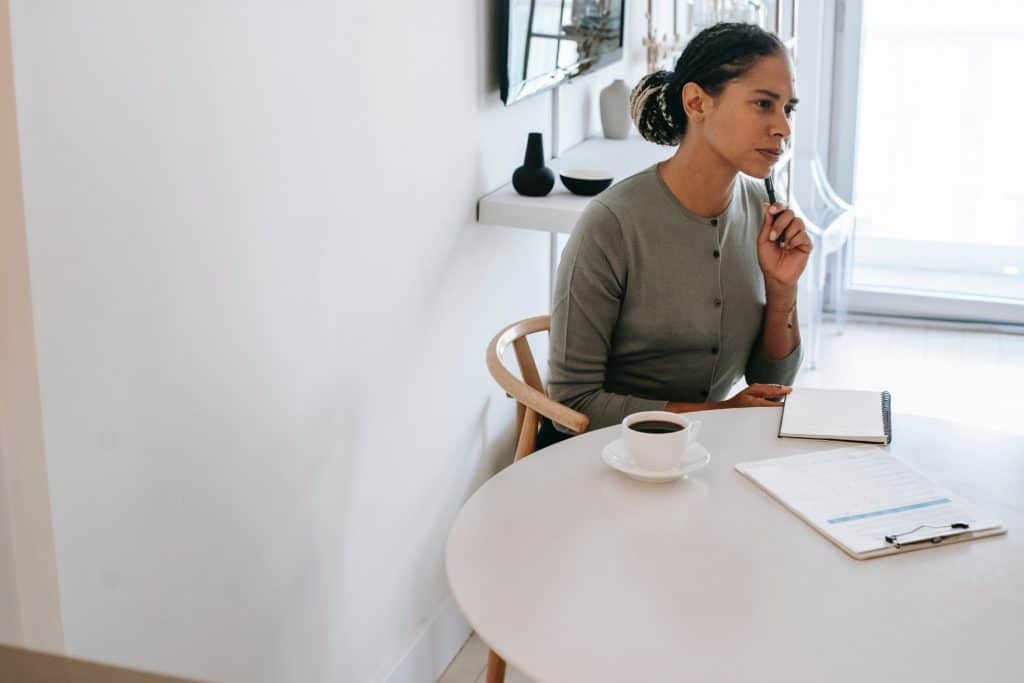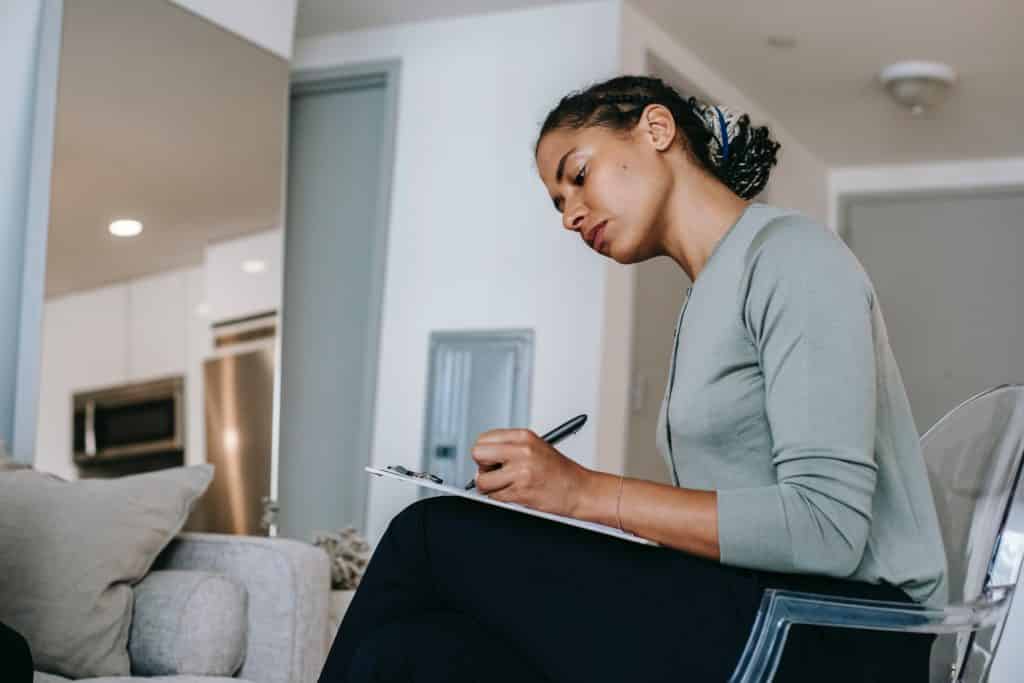This post may contain affiliate links, which means I’ll receive a commission if you purchase through my links, at no extra cost to you. Please read full disclosure for more information.
So, you have a pending interview for your dream job. Congrats!
After all, only 4-6 out of 250 applicants get invited for a corporate job interview.
You can’t wait to impress. You’ve researched the company, practiced questions, prepared some thoughtful questions, and picked a killer attire.
However, you’ve got a nagging concern: what are some positive nonverbal behaviors from an interviewer?
You know that nonverbal communication in an interview can communicate a lot. Your prayer is that the signals from your interviewer communicate positive vibes. And perhaps you’re freaking out because the cues can be hard to recognize and even harder to discern.
Worry no more! This post will ease your mind by explaining a few positive nonverbal communication examples interviewers give off.
Why Nonverbal Behavior is Important During an Interview
During an interview, you’re focused on impressing the interviewer. Sometimes, however, the best way to do that is by paying attention to what’s not being said. Nonverbal communication in an interview can reveal a lot about your interviewer and how they think and feel about you.
According to Albert Mehrabian’s research on nonverbal communication, 55 percent of communication is visual (body language and facial expressions), and 38 percent is the tone of voice. The rest is actual words.
That tells you that 93 percent of communication is how things are said.
The good thing is that body language happens subconsciously. It can tell you when a person is reserved, disinterested, or upset without conveying so without words. It’s, therefore, your job to leverage these signals to gauge how the interview is going so you adjust your performance accordingly.
So, which is a positive nonverbal behavior from an interviewer? Learn more in the next section.
Examples of Positive Nonverbal Behaviors to Look out for From Your Interviewers
Here are nine positive nonverbal communication examples your interviewer could exhibit during an interview:
- They’re leaning into you while you speak
- They keep eye contact and smiling
- Their arms are uncrossed
- Their body trunk is facing you
- They use an upbeat voice tone
- They tilt their head or raise an eyebrow while you talk
- They inject some humor into the conversation
- They mirror your body language
- They nod along with your answers
They’re leaning into you while you speak
Leaning forward is an incredibly positive posture during an interview. When an interviewer leans into you, it’s an unconscious sign they’re focused on what you’re telling them. But it may also be a deliberate attempt to create rapport and put you at ease.
Forward-leaning body language is critical because it can be challenging for the interviewer to fake it throughout the session. If they were bored or didn’t like you, they’d lean away from you, perhaps slumped in their chair.
A more promising sign is when the interviewer leans and nods along with your statements. But whether they nod or not, sit forward too—but not too much. That will make you seem likable and create a sense of connection between both of you.
They are keeping eye contact and smiling
Eye contact is an integral part of nonverbal communication in an interview—so powerful that 65% of interviewers wouldn’t consider candidates with poor eye contact.
You want an interviewer engaged with the conversation and not distracted by other things or people around them. The eyes always have it in such situations.
Firm eye contact during an interview shows the hiring manager is paying attention to what you have to say and connecting with you.
Smiling is another positive nonverbal behavior from an interviewer. It can mean you’re saying something right, or the interviewer likes you as a person.
When the interviewer smiles when you walk in, that demonstrates friendliness. If they continue to smile during parts of the interview, feel encouraged you’re doing well.
You don’t want the interviewer forcing a smile (which can be condescending). A genuine smile extends to the eyes and will hardly include both rows of teeth.
Their arms are uncrossed
You may think crossing arms makes one more confident, but it’s often a defensive body language move. In an interview, it could communicate that the person wants the appointment to end soon.
You want an interviewer with open body language, with arms uncrossed and relaxed. So when an interviewer does this, that’s a great sign.
Watch out for this positive sign most when the interviewer asks you questions. That’s because then they’re not busy taking notes on their laptop or writing down responses on a notepad.
Their body/torso is angled directly towards you
It feels like the center of someone’s attention when their body trunk (torso) faces you. That conveys interest and engagement, assuming the interviewer isn’t leaning back with their arms folded across their chest.
The tone of their voice is upbeat
You’ve probably heard that tone of voice is more important than the words themselves in communication — that’s undoubtedly true. But it can be challenging to pick up on an interviewer’s voice, considering they’re trying to be as professional and neutral as possible.
Still, listen for subtle changes in tone and inflection to determine whether or not the interviewer likes what they’re hearing. Does their voice perk up during certain moments?
When the interviewer’s voice sounds more excited or energetic, it typically means they’re enjoying the conversation. Their body language won’t waver, and they won’t mumble; instead, they’ll often speak clearly and confidently and smile.
They tilt their head or raise an eyebrow while you talk
If your interviewer is tilting their head to the side, this could signal they want to hear more. It’s a promising sign that they’re interested in what you’re saying. You should continue with your point and expand on it.
If your interviewer’s eyebrows lift without any other facial movements, chances are you surprised and impressed them with something you said or did.
They use humor
The interview process can be stressful for both parties, so a bit of fun goes a long way.
If your interview is relaxed enough for your interviewer to crack jokes, feel encouraged, as long as they don’t make inappropriate jokes. They’re comfortable with you and willing to engage in lighthearted conversation.
You might feel pressured to make a joke of your own. But that could make or break the interview. There’s a fine line between humor and offensiveness, and if you cross it, that will likely rub the interviewer up the wrong way.
They mirror your body language
The fact that our brains mimic the behavior of others is well known — it’s why yawning is contagious — but it can also happen unconsciously.
It’s a sign of trust when people subconsciously adopt similar postures and gestures in conversation. That’s a positive nonverbal communication example, especially coming from the interviewer. It suggests they like you and want to get along with you.
Mirroring can be as simple as leaning forward when you do so or looking in the same direction as you.
They nod along with your answers
Everyone nods at some point during a conversation. But when an interviewer nods along to your answer, it’s a positive sign they’re listening attentively and approving of what you’re saying.
It couldn’t be better if they accompanied the nonverbal cue with verbal confirmation like “mmm-hmm” or “right.”
Summary
Reading nonverbal communication in an interview extends beyond noting what your interviewer does. It’s also about knowing what the signals mean. That will help gauge the interviewer’s interest in you and your candidacy and warn you of any red flags.
I recommend identifying at least three body language messages that project a positive attitude. But of course, positive nonverbal signals from an interviewer may not always be as simple as smiling or making eye contact. They don’t have to be overwhelmingly dramatic either.
So, you may need to analyze more subtle gestures to decipher your interviewer’s thoughts about you appropriately. The above positive nonverbal communication examples will help.



